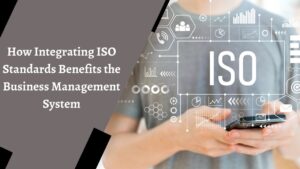The most recent version of the ISO 9001 standard ISO 9001: 2008, Quality Administration Frameworks Necessities, was authoritatively distributed by (ISO) the Worldwide Association for Normalization on November 14, 2008. It is the fourth release of the ISO 9001 norm since it was first distributed in 1987.
ISO 9001:2008 is a standard that gives a nonexclusive arrangement of necessities for associations wishing to foster a quality administration framework (QMS). The ISO 9001:2008 standard spotlights on further developing an associations business processes. It indicates no prerequisites for item or administration quality. Clients ordinarily set item and administration quality prerequisites. In any case, the assumption is that an association with a successful ISO 9001 based QMS will to be sure work on its capacity to meet client, legal and administrative necessities.
This is the main QMS standard to which an association might get formal outsider confirmation. Since prerequisites are nonexclusive and not explicit, associations have adaptability in fitting their QMS to accommodate their business, culture and dangers.
ISO 9001 necessities supplement authoritative and appropriate legal and administrative prerequisites. Those carrying out a QMS adjusting to ISO 9001 should guarantee that the particular necessities of their clients and pertinent legal and administrative organizations are met.
Who Is Answerable For Reconsidering QMS Principles?
The best iso consultants in kolkata Board of trustees no.176, Sub-panel no.2 (ISO/TC 176/SC 2) is answerable for the correction cycle as a team with agreement among quality and industry specialists named by ISO Part bodies, and addressing every single closely involved individual.
Does ISO 9001:2008 Have Extra Prerequisites Past ISO 9001:2000?
This most recent (fourth) release of ISO 9001 contains no new necessities contrasted with the (third) year 2000 version, which it replaces. What it does is give explanation to the current prerequisites of ISO 9001:2000 in view of eight years experience of overall executing of the norm and acquaints changes expected with further develop consistency with the natural administration framework standard, ISO certification agency in kolkata.
The explanations and changes in ISO 9001:2008 address tweaking, as opposed to an exhaustive upgrade. It centers around changes that associations could make to more readily conform to the soul of the norm without adding, erasing, or adjusting its necessities. The progressions are minor in nature and address such issues as the need to explain, give more noteworthy consistency, resolve apparent ambiguities, and further develop similarity with ISO 14001. The numbering framework and the design of the standard stay unaltered. Accordingly, the new standard seems to be the old norm.
ISO has coordinated the progressions integrated in this ISO 9001:2008 version into the accompanying classifications:
- No progressions or least changes on client archives, including records
- No progressions or least changes to existing QMS processes
- No extra preparation required or insignificant preparation required
- No consequences for current confirmations
Conversely, the third release, ISO 9001:2000 distributed in 2000, addressed a significant redesign of the norm, including new necessities and a honed client center, reflecting improvements in quality administration and experience acquired since the distribution of the underlying rendition.




